Better Buses
NYC DOT is committed to working with the MTA and NYPD to improve buses citywide, ensuring that New Yorkers have
service that they can depend on. The Better Buses Action Plan is focused on improving bus speeds citywide by 25% and
reversing downward bus ridership trends. This will be accomplished through NYC DOT projects using our bus priority
toolkit, increased camera and NYPD enforcement of bus lanes, and service management initiatives and bus network
redesigns by MTA.
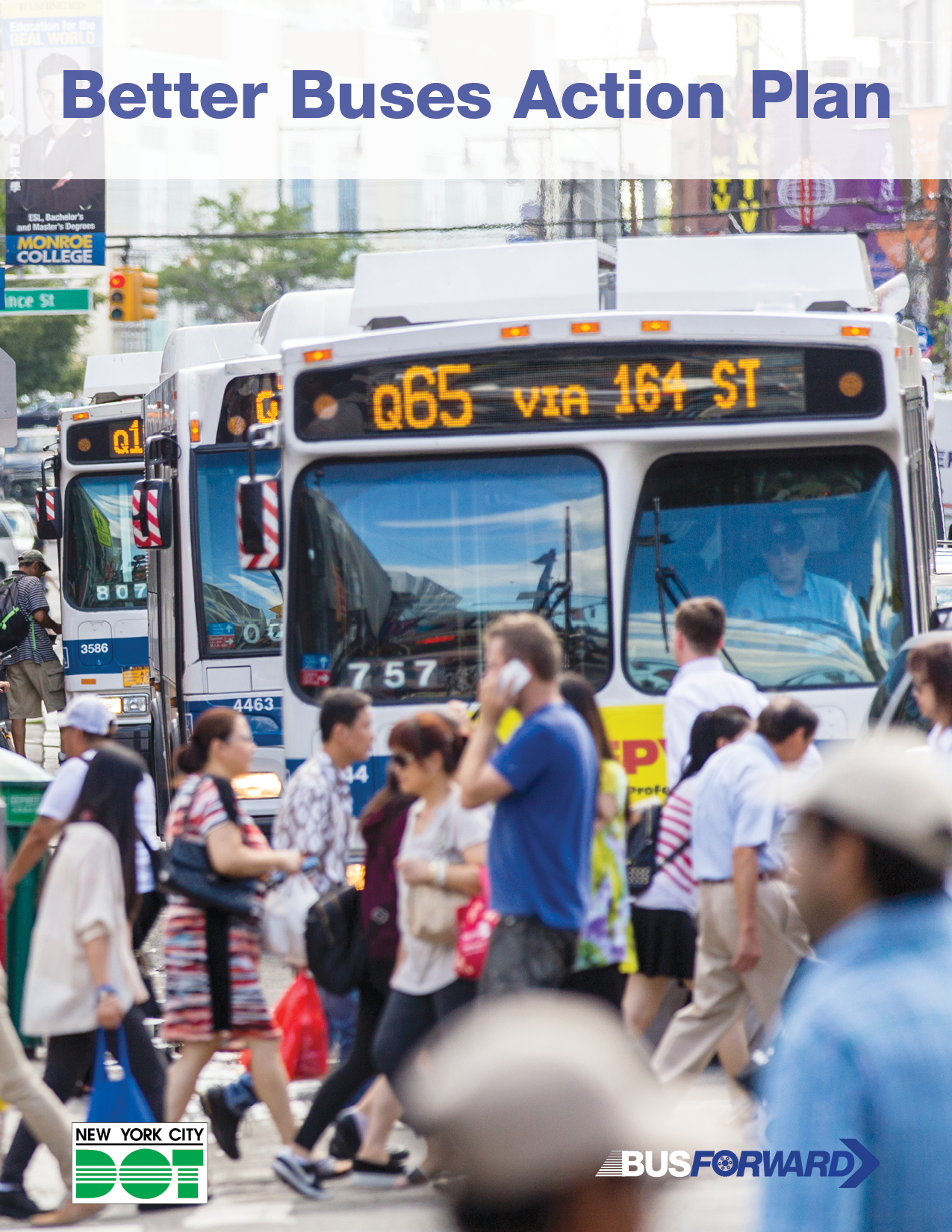
Better Buses Goals
The Better Buses Action Plan includes the following goals:
Bus Priority
- Improve 5 miles of existing bus lanes each year
- Install 10–15 miles of new bus lanes each year
- Pilot up to 2 miles of physically separated bus lanes
- Implement NYC DOT street design projects that benefit 600,000 daily riders each year
Technology
- Add 300 Transit Signal Priority (TSP) intersections per year
Enforcement
- Expand bus lane camera enforcement
- Increased NYPD bus lane enforcement with seven dedicated tow truck teams
Bus Stops
- Evaluate and improve bus stops
Working with the MTA
- Support MTA Bus Network Redesign efforts with borough bus priority plans
- Press for all-door boarding, restarting the SBS program, and other improvements to bus operations
NYC DOT’s Bus Priority Toolkit:
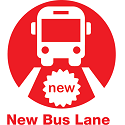
New Bus Lane
Bus lanes separate buses from general traffic, improving speed and reliability. They are typically located along the
curb or “offset” from the curb, allowing the curb lane to be utilized for other purposes. Ensuring that bus lanes are
not used by others is a challenge in New York City, so enforcement is crucial.
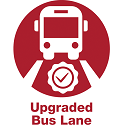
Upgraded Bus Lane
NYC DOT sometimes considers improving bus lanes to make them more effective. This may include extending hours,
painting the lanes red, changing curbside lanes to offset lanes, or other measures.
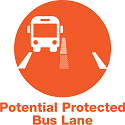
Potential Protected Bus Lane
Surrounding a bus lane with a physical barrier makes it more difficult for other vehicles to illegally use the lane.
This may improve the effectiveness of a bus lane where violations are rampant, but must be accompanied by measures
that allow access to the curb for emergency vehicles.
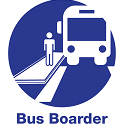
Bus Boarders
Bus bulbs are permanent sidewalk extensions at bus stops that provide more space for waiting passengers and allow
buses to save time by pulling up to the curb without leaving the travel lane. Durable recycled plastic “bus boarders”
serve the same purpose, but do not require capital construction.
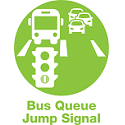
Bus Queue Jump Signal
In addition to corridor-wide Transit Signal Priority (TSP) treatments, dedicated bus signal phases are another way to
use traffic signals to give buses priority through an intersection. These bus queue jump signals provide buses with a
dedicated signal phase that allows them to bypass congested general traffic and get a head start.
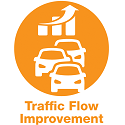
Traffic Flow Improvement
Improving the general flow of traffic with signal timing adjustments or improved lane markings can also benefit buses.
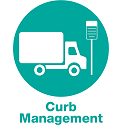
Curb Management
Adequate and appropriate truck loading, passenger drop-off, and parking regulations can benefit bus operations by
reducing double parking and the illegal use of bus lanes. Effective enforcement is also critical to curb management
success.
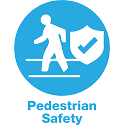
Pedestrian Safety
Under Vision Zero, the City uses every tool at its disposal to improve the safety of our streets. Bus priority
projects such as bus bulbs shorten pedestrian crossings and improve bus operations, and new crosswalks and median
refuge islands can improve safety for all pedestrians, including bus riders accessing stops.
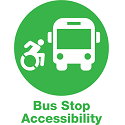
Bus Stop Accessibility
In addition to creating safer crossings, bus stops need to be accessible to everyone. This means that nearby sidewalks
and pedestrian ramps should be present and in good condition. NYC DOT reviews and updates sidewalks and pedestrians
ramps during bus priority projects.
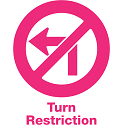
Turn Restrictions
Limiting certain turns is another way that the City can increase safety for all users. In certain projects doing so
also allows buses to avoid conflicts and move faster. Turn restrictions also benefit traffic flow.
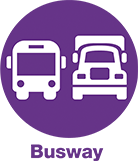
Busway
Busways prioritize travel for buses and often trucks, with other motorized vehicles limited to local access. This
treatment significantly reduces traffic volumes and congestion, improving bus speeds and reliability, while improving
safety for all roadway users.
Current Better Buses Projects
Lexington Avenue, 60th Street to 52nd Street
NYC DOT proposes converting the existing curbside bus lane into an offset bus lane on this eight-block stretch. Moving the bus lane away from the curb, will reduce conflict between buses and other vehicles trying to access the curb, and improve bus operations. Lexington Avenue, 60th Street to 52nd Street - presented to Manhattan Community Board 8 in October 2025 Lexington Avenue, 60th Street to 52nd Street - presented to Manhattan Community Board 6 in October 2025 Lexington Avenue, 60th Street to 52nd Street - presented to Manhattan Community Board 5 in September 2025
Marcy Avenue, Borinquen Place to Broadway
NYC DOT is proposing to install a bus priority lane along the three blocks of Marcy Avenue between Borinquen Place and Broadway. These three blocks host a confluence of three Williamsburg Bridge/Washington Plaza-bound bus routes: the B24, B60, and Q54, and each route experiences delays and slower speeds along this tail end stretch. These delays compound on top of delays earlier in the routes’ journeys and result in buses arriving late to their terminal, delaying the next scheduled run. NYC DOT is proposing to install a bus priority lane along these three blocks of Marcy Avenue to help alleviate these delays. Marcy Avenue, Borinquen Place to Broadway - presented to Brooklyn Community Board 1 in September 2025 Marcy Avenue, Borinquen Place to Broadway - presented to Brooklyn Community Board 1 in June 2025
Madison Avenue Bus Improvement Project, Manhattan
NYC DOT, in collaboration with MTA, is proposing bus priority improvements on Madison Avenue from East 23rd Street to East 42nd Street. The proposal aims to improve bus speeds and reliability for 92,000 daily bus riders on 34 local and express bus routes that traverse the corridor. Improvements include extending the existing double bus lanes on Madison Avenue north of East 42nd Street south to East 23rd Street, left turn bays at select cross streets, and curb regulation changes. Madison Avenue, East 23rd Street to East 42nd Street Bus Improvements - presented to Manhattan Community Board 6 in June 2025 Madison Avenue, East 23rd Street to East 42nd Street Bus Improvements - presented to Manhattan Community Board 5 in May 2025
Eastern Parkway from Schenectady Avenue to Ralph Avenue, Brooklyn
NYC DOT, in collaboration with MTA, is proposing accessibility improvements along Eastern Parkway, from Schenectady Avenue to Ralph Avenue. The proposal aims to create ADA-accessible ramps and bus stops, as well as improve B14 reliability along Eastern Parkway. Eastern Parkway, Schenectady Avenue to Ralph Avenue - presented to Brooklyn Community Board 8 in April 2025 Eastern Parkway, Schenectady Avenue to Ralph Avenue - presented to Brooklyn Community Board 9 in April 2025 Eastern Parkway, Schenectady Avenue to Ralph Avenue - presented to Brooklyn Community Board 8 in March 2025
79th Street, Riverside Drive to FDR Drive
NYC DOT is planning to install transit and pedestrian safety improvements along 79th Street from Riverside Drive to the FDR Drive as part of the 79th Street SBS Capital Project. This capital project follows up on NYC DOT’s 2017 Street Improvement Project (SIP) that was implemented as part of the launch of the M79 Select Bus Service. Improvements made by this capital projects will include bus bulbs, upgraded bus stops, new bus pads, updated ADA elements, curb extensions, improved median pedestrian refuges, refurbished sidewalks, stormwater infiltration basins, and new landscaping. The safety benefits of the project will include increased pedestrian visibility and accessibility, shorter and safer pedestrian crossings, and slower and safer vehicle turns. The transit benefits of the projects include the provision for faster boarding and alighting times, improved bus reliability, and new bus stop amenities. 79th Street, Riverside Drive to FDR Drive - presented to Manhattan Community Board 7 in April 2025 79th Street, Riverside Drive to FDR Drive - presented to Manhattan Community Board 8 in April 2025
Victory Boulevard from Bay Street to Wild Avenue, Staten Island
NYC DOT and MTA seek to improve bus service and safety for all mode users on Victory Boulevard on Staten Island. Various treatments will be studied to find the best balance of all modes on these important connections across Staten Island. Victory Boulevard, Wild Avenue to Willowbrook Avenue - presented to Staten Island Community Board 2 in June 2025 Victory Boulevard, Bay Street to Little Clove Road - presented to Staten Island Community Board 1 in May 2025 Victory Boulevard, Bay Street to Wild Avenue - presented to Staten Island Community Board 1 in March 2025
Broadway, 157th Steet to 220th Street
NYC DOT is exploring a potential project on Broadway between 157th and 220th St in cooperation with MTA. This section of Broadway has been identified by the NYC Streets Plan. The study will identify ways to improve bus speeds and reliability on the corridor, as well as general safety and traffic flow improvements. Broadway, 157th Steet to 220th Street - presented to Manhattan Community Board 12 in March 2025
116th Street, Morningside Avenue to Pleasant Avenue
NYC DOT is studying bus priority and pedestrian safety improvements on 116th Street, Manhattan Avenue, Morningside Avenue and Pleasant Avenue in Manhattan. The 116th Street Study Area serves 10 bus routes (M3, M7, M102, M116, BxM1, BxM6, BxM7, BxM8, BxM9, BxM11), which carry 65,000+ daily riders, with connections to the 2, 3, 6, B, C trains and seven perpendicular bus routes. The study area experiences slow bus speeds, with buses traveling less than 4 mph in some segments. Weekday congestion causes 785 hours of delay to M116 passengers daily. 116th Street is a Vision Zero Priority Corridor, within a Priority Youth Injury Area and Senior Area. NYC DOT aims to improve safety through organizing the roadway, improving visibility and predictability, slowing turning vehicles, and creating safer crossings. 116th Street, Morningside Avenue to Pleasant Avenue - presented to Manhattan Community Board 11 in June 2025 116th Street, Morningside Avenue to Pleasant Avenue - presented to Manhattan Community Board 10 in June 2025 116th Street, Morningside Avenue to Pleasant Avenue - presented to Manhattan Community Board 9 in June 2025 116th Street, Morningside Avenue to Pleasant Avenue - presented to Manhattan Community Board 11 in May 2025 116th Street, Morningside Avenue to Pleasant Avenue - presented to Manhattan Community Board 10 in May 2025 116th Street, Morningside Avenue to Pleasant Avenue - presented to Manhattan Community Board 11 in March 2025 116th Street, Morningside Avenue to Pleasant Avenue - presented to Manhattan Community Board 10 in February 2025 116th Street, Morningside Avenue to Pleasant Avenue - presented to Manhattan Community Board 9 in February 2025
Linden Boulevard, Fountain Avenue to Conduit Avenue
NYC DOT is proposing bus priority and traffic safety improvements on Linden Boulevard in Brooklyn and Queens from Fountain Avenue to Conduit Avenue. This project seeks to improve bus service for 38,000 bus passengers using four bus routes on this Vision Zero corridor. Linden Boulevard, Fountain Avenue to Conduit Avenue - presented to Brooklyn Community Board 5 in January 2025
34th Street Enhanced Bus Priority
NYC DOT, in collaboration with MTA, is exploring bus and pedestrian safety enhancements on 34th Street. Located within the Congestion Pricing tolling zone, 34th Street has been identified as an important corridor for facilitating safe and easy travel within the Central Business District. The project aims to improve bus speeds and reliability, and safety for the corridor's thousands of daily bus riders and pedestrians.
Learn more about the 34th Street Busway at nyc.gov/34Busway.
34th Street Enhanced Bus Priority - presented to Manhattan Community Board 6 in June 2025 34th Street Enhanced Bus Priority - presented to Manhattan Community Board 5 in May 2025 34th Street Enhanced Bus Priority - presented to Manhattan Community Board 6 in February 2025 34th Street Enhanced Bus Priority - presented to Manhattan Community Board 5 in January 2025 34th Street Enhanced Bus Priority - presented to Manhattan Community Board 4 in January 2025
Dekalb & Lafayette Avenues
NYC DOT and MTA seek to improve B38 bus service and pedestrian and cyclist safety on Dekalb and Lafayette Avenues. Various treatments will be studied to find the best balance of all modes on these important connections across Brooklyn and into Queens. Dekalb & Lafayette Avenues - presented to Brooklyn Community Board 2 in December 2024 Dekalb & Lafayette Avenues - presented to Brooklyn Community Board 3 in December 2024
Bay Parkway and Cropsey Avenue Bus Priority and Safety Improvements
NYC DOT, in collaboration with the MTA, is proposing bus priority and safety improvements on Bay Parkway from Avenue J to Shore Parkway as well as Cropsey Avenue from Bay Parkway to 26th Avenue. This project aims to improve bus service and reliability for 35,000 daily bus riders on bus routes along the two corridors. These corridors were identified as a priority in the NYC Streets Plan and Brooklyn Bus Network Redesign, and Bay Parkway is a Vision Zero priority corridor. Bay Parkway and Cropsey Avenue - presented to Brooklyn Community Board 12 in June 2025 Bay Parkway and Cropsey Avenue - presented to Brooklyn Community Board 11 in June 2025 Bay Parkway and Cropsey Avenue - presented to Brooklyn Community Board 12 in January 2025 Bay Parkway and Cropsey Avenue - presented to Brooklyn Community Board 11 in November 2024
Grand Street/Grand Avenue, Metropolitan Avenue to Queens Boulevard
NYC DOT, in collaboration with MTA, is proposing safety and bus priority improvements on Grand Street/Grand Avenue between Metropolitan Avenue and Queens Boulevard. Grand Street/Grand Avenue is a Vision Zero priority corridor that serves over 51,000 daily bus riders on the Q54, Q58, and Q59 bus routes. Grand Street/Grand Avenue, Metropolitan Avenue to Queens Boulevard - presented to Queens Community Board 5 in December 2024 Grand Street/Grand Avenue, Metropolitan Avenue to Queens Boulevard - presented to Queens Community Board 4 in November 2024 Grand Street/Grand Avenue, Metropolitan Avenue to Queens Boulevard - presented to Brooklyn Community Board 1 in November 2024
Allen, Pike, Madison Streets Bus Improvement Project, Manhattan
NYC DOT, in collaboration with MTA, is proposing bus priority improvements on Allen Street and Pike Street from Delancey Street to South Street, as well as Madison Street from Pike Street to St James Place. The proposal aims to improve bus speeds and reliability for the route’s 57,000 daily bus riders. Improvements include extending the existing offset bus lane on Allen Street north of Delancey Street south to Pike Street and curb regulation changes on Madison Street. Allen, Pike, Madison Streets Bus Improvement Project - presented to Manhattan Community Board 3 in June 2024
Hillside Avenue Bus Service Improvements, Queens
NYC DOT is proposing bus priority and safety improvements on Hillside Avenue in Queens from Springfield Boulevard to Queens Boulevard. This project aims to improve bus service and reliability for 210,000 daily bus riders on routes along Hillside Avenue. This corridor was identified as a priority in the Connecting to the Core report, NYC Streets Plan, Queens Bus Network Redesign, and is a Vision Zero priority corridor. Hillside Avenue Bus Service Improvements - presented to Queens Community Board 8 in May 2025 Hillside Avenue Bus Service Improvements - presented to Queens Community Board 13 in May 2025 Hillside Avenue Bus Service Improvements - presented to Queens Community Board 12 in May 2025 Hillside Avenue Bus Service Improvements - presented to Queens Community Board 13 in January 2025 Hillside Avenue Bus Service Improvements - presented to Queens Community Board 12 in January 2025 Hillside Avenue Bus Service Improvements - presented to Queens Community Board 8 in January 2025 Hillside Avenue Bus Service Improvements - presented to Queens Community Board 12 in June 2024 Hillside Avenue Bus Service Improvements - presented to Queens Community Board 13 in June 2024 Hillside Avenue Bus Service Improvements - presented to Queens Community Board 8 in May 2024
Tremont Avenue Bus Priority Project
NYC DOT, in cooperation with MTA, is proposing bus priority improvements on Tremont Avenue in the Bronx to improve travel speed and reliability for nearly 34,000 daily bus riders on the Bronx’s 5th busiest bus route.
Learn more about the Tremont Avenue Busway at nyc.gov/TremontBusway.
Tremont Avenue, University Avenue to Bronx River Parkway - Community Advisory Board Meeting in March 2025 Tremont Avenue, University Avenue to Bronx River Parkway - presented to Bronx Community Board 6 in February 2025 Tremont Avenue, University Avenue to Bronx River Parkway - presented to Bronx Community Board 6 in November 2024 Tremont Avenue, University Avenue to Bronx River Parkway - presented to Bronx Community Board 5 in November 2024 Tremont Avenue, University Avenue to Bronx River Parkway - Community Advisory Board Meeting in July 2024 Tremont Avenue, University Avenue to Bronx River Parkway - presented to Bronx Community Board 6 in June 2024 Tremont Avenue, University Avenue to Bronx River Parkway - presented to Bronx Community Board 5 in June 2024 Tremont Avenue, University Avenue to Bronx River Parkway - presented to Bronx Community Board 5 in March 2024 Tremont Avenue, University Avenue to Bronx River Parkway - presented to Bronx Community Board 6 in February 2024 Tremont Avenue, University Avenue to Boston Road - Community Advisory Board Meeting 1 in December 2022
96th Street Bus Priority, Manhattan
NYC DOT, in collaboration with MTA, is proposing bus priority and safety improvements on 96th Street from 1st Avenue to West End Avenue. The proposal aims to improve bus speeds and reliability for the routes' 15,500 daily riders, as well as safety on the corridor for all users. Improvements include offset and curbside bus lanes, left turn bays, and rubber speed bumps. 96th Street, First Avenue to West End Avenue - presented to Manhattan Community Board 7 in May 2024 96th Street, First Avenue to West End Avenue - presented to Manhattan Community Board 11 in May 2024 96th Street, First Avenue to West End Avenue - presented to Manhattan Community Board 8 in May 2024
Second Avenue, East 59th Street to Houston Street, Manhattan
NYC DOT, in collaboration with MTA, is proposing bus lane and bike lane improvements on Second Avenue from East 59th Street to Houston Street. The proposal aims to improve bus speeds and reliability for the route’s 57,000 daily bus riders and increase capacity for the corridor’s 6,000 daily cyclists. Improvements include shifting the bus lane from its part time curbside location to a 24/7 offset bus lane, widening the existing bike lane, and adding additional pedestrian islands and curb extensions for enhanced pedestrian safety. Second Avenue, East 59th Street to Houston Street - presented to Manhattan Community Board 3 in April 2024 Second Avenue, East 59th Street to Houston Street - presented to Manhattan Community Board 6 in March 2024
Livingston Street Transit Priority Study, Brooklyn
NYC DOT, in cooperation with MTA, has initiated a Transit Priority Study for Livingston Street in Downtown Brooklyn, between Boerum Place and Flatbush Avenue. Livingston Street has been identified as a bus priority corridor in the NYC Streets Plan and MTA's Brooklyn Bus Network Redesign Draft Plan. The study will explore ways to improve bus speeds and safety for pedestrians and other users as they travel along Livingston Street. Livingston Street Protected Bus Lane Regulations - November 2023 Livingston Street Transit Priority Study - presented to Brooklyn Community Board 2 in May 2023 Livingston Street Transit Priority Study, Brooklyn - Community Advisory Board Meeting 2 in May 2023 Livingston Street Transit Priority Study, Brooklyn - Community Advisory Board Meeting 1 in December 2022
Flatbush Avenue Bus Priority, Brooklyn
NYC DOT, in cooperation with MTA, is investigating bus priority and pedestrian safety improvements on Flatbush Avenue between Tillary Street and Avenue V. Flatbush Avenue is one of the future bus priority corridors identified at the NYC/MTA Transit Improvement Summit and is a priority corridor in the NYC Streets Plan, as well as a Vision Zero priority corridor for safety improvements. Informed by a robust community outreach process, the project will explore and implement solutions to improve bus speeds and pedestrian safety. Flatbush Avenue Bus Priority - presented to Brooklyn Community Board 6 in October 2025 Flatbush Avenue Bus Priority - presented to Brooklyn Community Board 8 in October 2025 Flatbush Avenue Bus Priority - presented to Brooklyn Community Board 2 in September 2025 Flatbush Avenue Bus Priority - Community Advisory Board Meeting in July 2025 Flatbush Avenue Bus Priority - presented to Brooklyn Community Board 8 in June 2025 Flatbush Avenue Bus Priority - presented to Brooklyn Community Board 6’s Transportation Committee in June 2025 Flatbush Avenue Bus Priority - presented to Brooklyn Community Board 2 in June 2025 Flatbush Avenue Bus Priority - presented to Brooklyn Community Board 6 in June 2024 Flatbush Avenue Bus Priority - presented to Brooklyn Community Board 8 in June 2024 Flatbush Avenue Bus Priority - presented to Brooklyn Community Board 2 in June 2024 Flatbush Avenue Bus Priority - Community Advisory Board Meeting in June 2024 Flatbush Avenue Bus Priority - presented to Brooklyn Community Board 14 Transportation Committee in January 2023 Flatbush Avenue Bus Priority - Community Advisory Board Meeting in November 2022 Flatbush Avenue Bus Priority - presented to Brooklyn Community Board 9 Transportation Committee in September 2022 (pdf) Flatbush Avenue Bus Priority - June 2022 Kickoff Meeting
Fordham Road, Major Deegan Expressway to Boston Road, Bronx
NYC DOT is investigating transit improvements along Fordham Road between the Major Deegan Expressway and Boston Road. Fordham Road is a vital crosstown Bronx corridor. Nine bus routes (Bx9, Bx12 SBS/Local, Bx17, Bx22, Bx34, Bee-Line 60-62 buses) carry 93,700 daily riders, with connections to the A, B/D, 1, 2/5, 4, and 6 subways, and Metro North Harlem, Hudson, & New Haven Lines. In 2008, NYC DOT and MTA launched the first Select Bus Service (SBS) route on the Bx12, which included curbside bus lanes and off board fare payment. Between 2008 and 2014, Bx12 bus speeds and ridership increased. In recent years, bus speeds have declined, which has led to long, unreliable commutes and declining ridership. NYC DOT will evaluate a range of potential design improvements to improve bus speeds and reliability, while also improving curb management and traffic safety.
Fordham Road, Inwood Bus Priority - presented to Bronx Community Board 6 in June 2023 Fordham Road, Inwood Bus Priority - presented to Bronx Community Board 5 in June 2023 Fordham Road, Inwood Bus Priority - presented to Bronx Community Board 11 in June 2023 Fordham Road, Inwood Bus Priority - presented to Bronx Community Board 7 in June 2023 Fordham Road, Inwood Bus Priority - presented to Fordham Road Community Advisory Board in May 2023 Fordham Road, Inwood Bus Priority - presented to Fordham Road Community Advisory Board in March 2022
